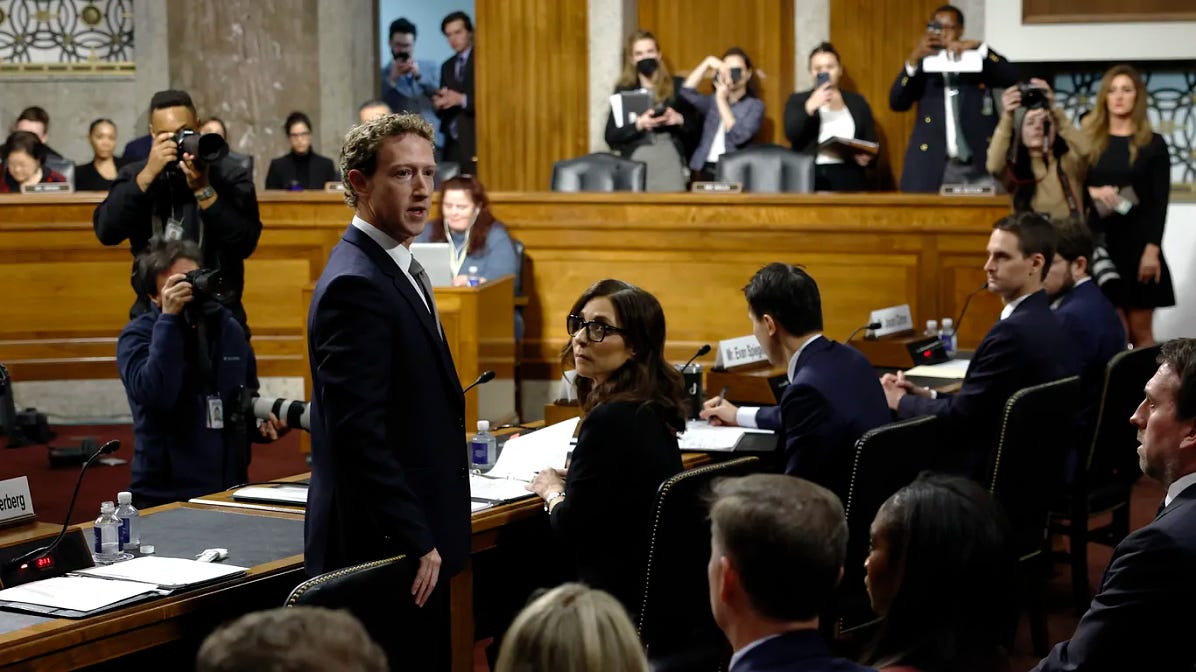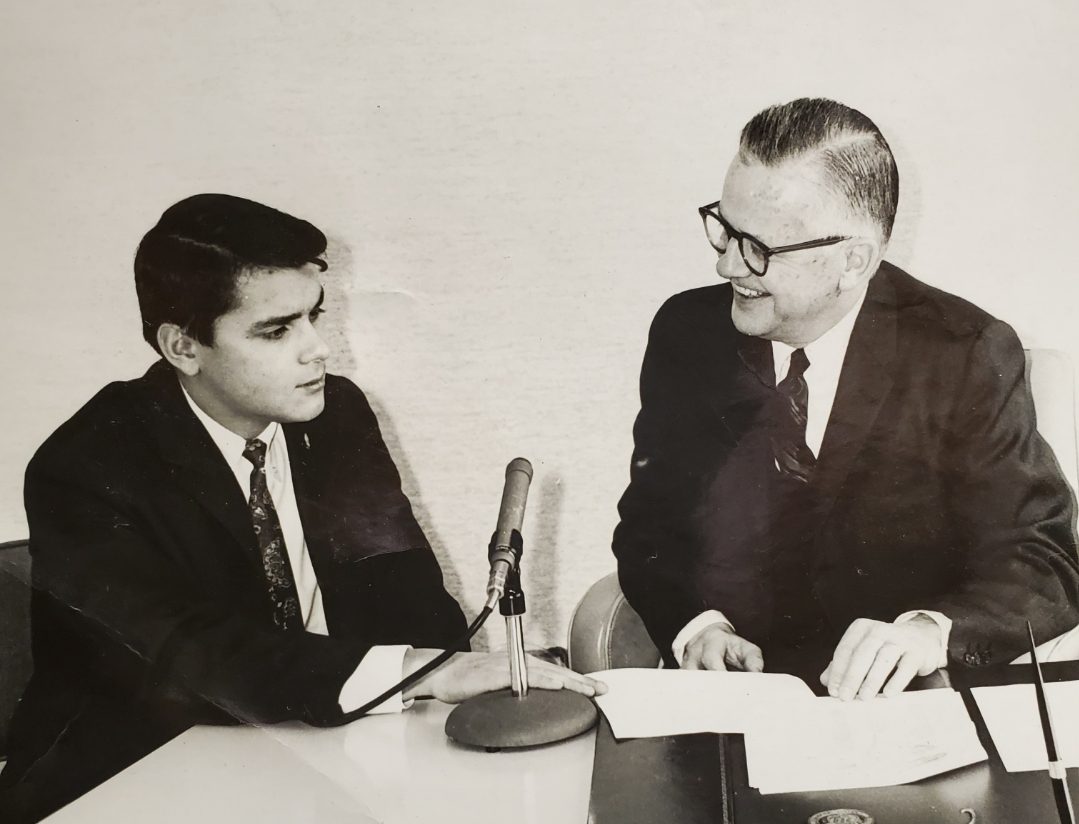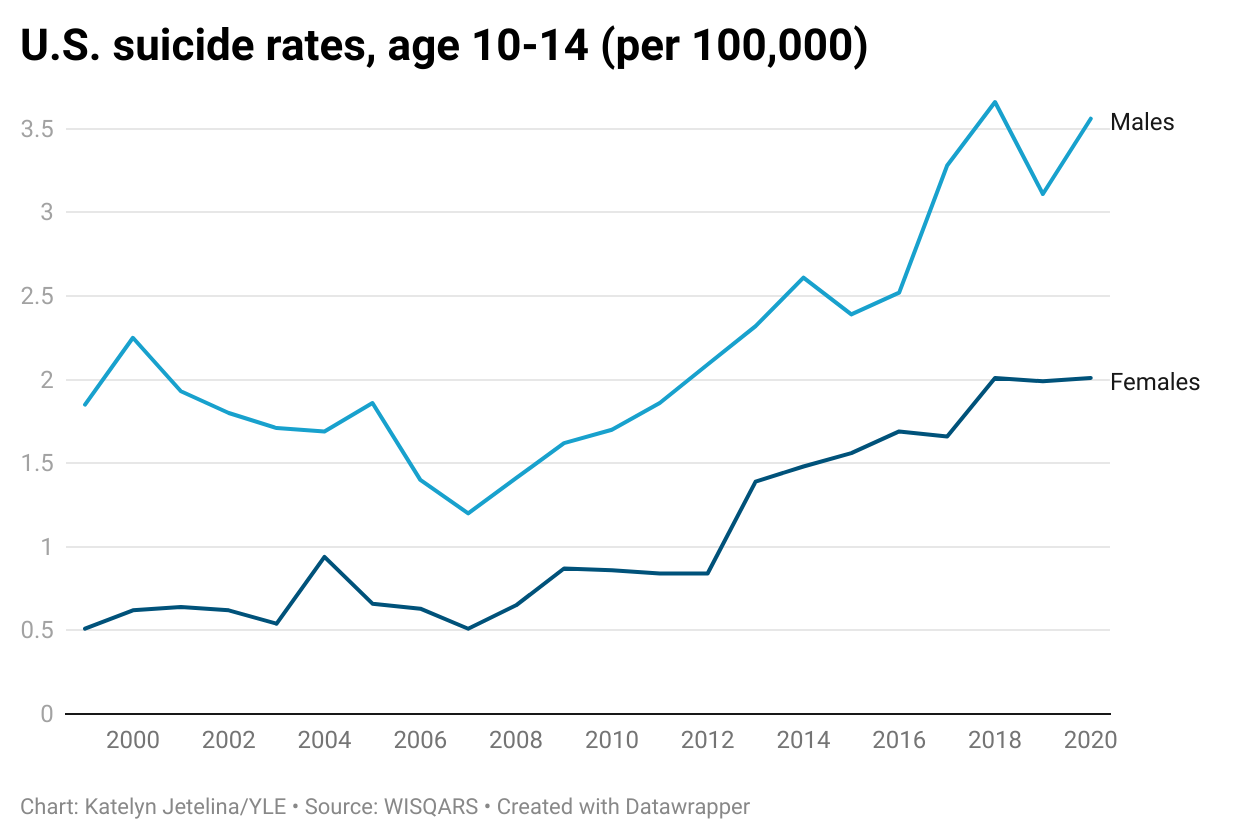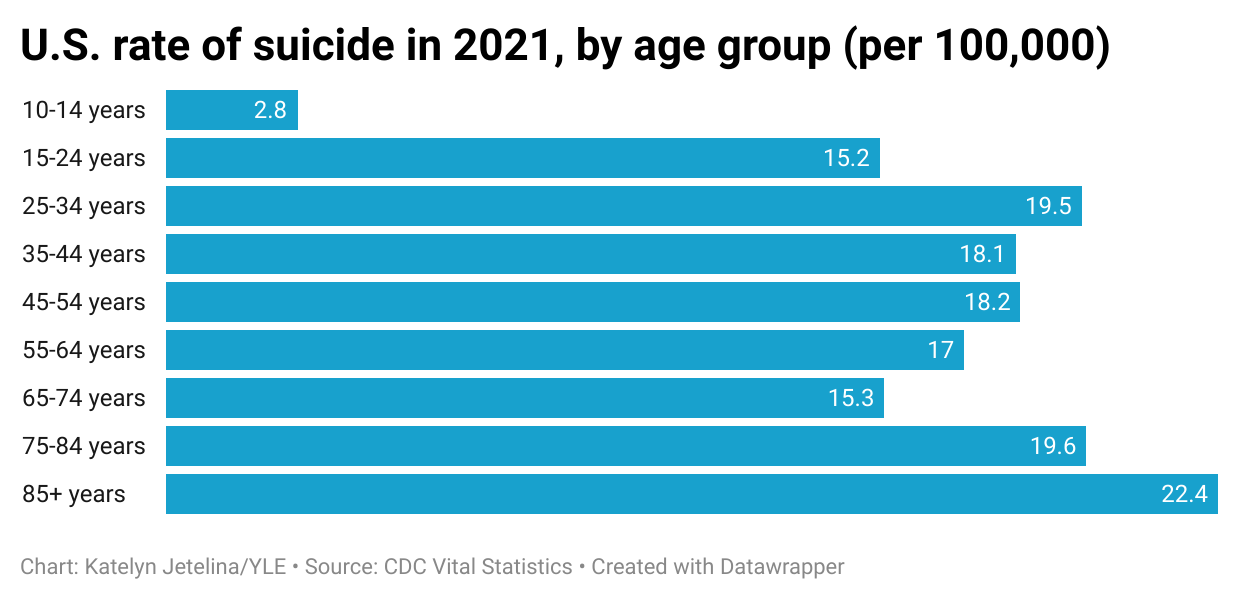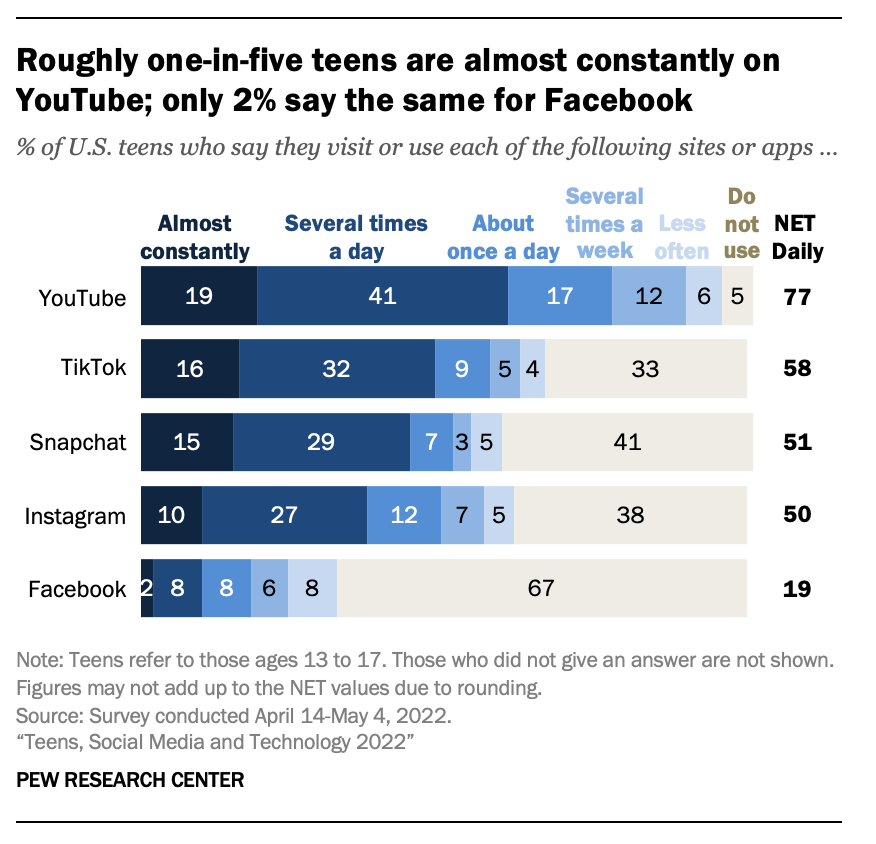This post contains sensitive information, including a discussion of suicide. If you are in need of help, there is an abundance of resources on the National Suicide Prevention Hotline website, which includes an anonymous chat function and a direct line at 800-273-8255.
Protecting youth from the potential negative mental health effects of social media is front and center in the mass media, in conversations around dinner tables, and in federal- and state-level bills.
Yes. Rates of mental health problems have continually increased among young people over the past 15 years, regardless of how you measure it:
In 2021, 42% of U.S. high school students reported “persistent feelings of sadness or hopelessness,” up from 28% in 2011. The increase was especially dramatic among girls.
According to diagnostic measures (structured interviews by a trained professional), depression has increased 7.7% in U.S. teens—and 12% among girls—between 2009 and 2019.
According to U.S. death certificates, suicide rates among youth ages 10-14 increased 139% for girls and 70% for boys since 2012. However, this is a bit difficult to interpret given low the rates to begin with for girls.
(The trends are increasing fast among teens. But, for perspective, the rates of suicide are significantly higher in adults.)
Teens use social media. A lot. Almost one in five teens use YouTube “almost constantly.” Nearly half of teens use TikTok (48%) and Snapchat (44%) several times per day. And the total hours of use have increased in recent years among teens.
But using social media doesn’t necessarily equate to mental health problems. Correlation doesn’t always equal causation. And, to make things more complicated, there are harms and benefits of social media.
We have a lot of correlational evidence, and some—but not much—causal evidence of the harms of social media on teens’ mental health.
Correlational studies ask teens how much time they’re spending on social media, and ask them about mental health. In general, these point to weak but statistically relevant correlations between social media use and lower teen well-being.
In terms of causal evidence, we have a couple of studies:
- Some studies randomly assigned people (both adults and teens) to stop using social media (and others not to stop) and then evaluated their well-being. The results of these studies are mixed. Variability seems to depend on the details of the design: How long did they stop using social media? Did they “detox” completely or just reduce the time spent? What are they using social media for?
- Other studies have taken advantage of circumstances that naturally occurred in the world to mimic an experimental design. One study looked at when Facebook was introduced on different college campuses (which varied randomly) and found that after Facebook showed up, rates of mental health concerns increased. A few others (like this and this) look at the introduction of high-speed Internet in different areas and found associations with poorer mental health after its introduction. Generally, these do not address social media specifically.
What is clear is that we need more research with more rigorous designs.
Competing with these harms are studies that show social media has benefits for mental health, too. Teens report that social media is important for:
- Helping them stay connected with friends
- Meeting like-minded peers
- Exploring their interests
- Learning
- Discovery
These benefits can be especially important for those who may be socially vulnerable in their offline lives, like LGBTQ+ youth.
Assessing causality means understanding what other factors may also explain the rise of mental illness among teens. A few alternative explanations have been proposed:
- Rising income inequality
- Wars
- Violence and access to firearms (suicides)
- Global financial crisis
- Racial inequality
- Academic and social pressures
- Political views on current events
- Climate change
- The opioid epidemic
- Unhelpful narratives around mental health
Of course, many of these explanations may be intertwined with and amplified by social media, but the short answer is that we likely can’t blame social media alone. Mental health is complicated, and there is unlikely to be a single, simple explanation for a large-scale phenomenon like this one.
We’ve got a few options:
- Option 1: Do nothing until research is “settled” on the issue before taking legislative action. Unfortunately, this may require a “burden of proof” that is rarely, if ever, established in psychology research. In this case, some evidence of harm, even if imperfect, may need to be enough to drive change.
- Option 2: Put it on the parents. Parents certainly play a hugely important role in teens’ relationships with social media. Evidence supports parents’ active involvement in kids’ digital lives through ongoing conversations, reasonable limits, and appropriate monitoring. But can (and should) they manage it alone? If large-scale policy changes create safer social media platforms, individual disadvantages are minimized.
Option 3: Ban it among minors. No states have outright banned it among minors yet. This option would limit access to its benefits and would limit kids’ opportunities to practice using social media in safe and healthy ways prior to adulthood. This has changed substantially since this piece was originally published. Many states, like Arkansas and Utah, have passed bills that limit social media use. In one case (Florida), it’s banned among kids under 16.
- Option 4: Put reasonable protections in place. Social media is probably more like cars than drugs. We want protections in place (seatbelts, airbags, drivers’ ed), but an outright ban may go too far. Some options include: raising the minimum age from 13 to 15 or 16; requiring age verification of some kind; limiting recommendations of harmful or problematic content; limiting overall time spent (e.g., via forced “breaks” or overall time limits); and limiting targeted advertising.
We have some evidence that social media is playing a role in the teen mental health crisis, but that evidence is not definitive. And social media can play a positive role, too. It is highly unlikely that social media is the only cause of mental illness among children. We can certainly take steps to make social media a healthier place, but if we truly want to support teens’ mental health, this is only the start.
Love, YLE and JN

